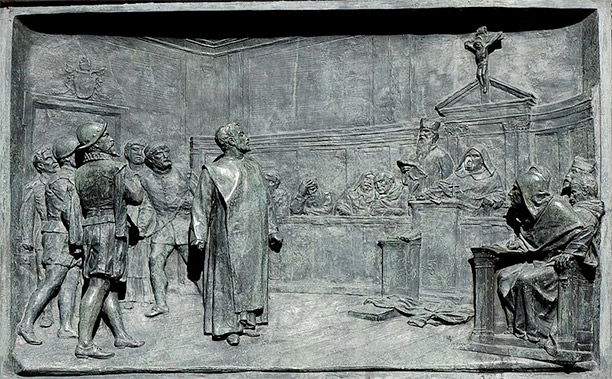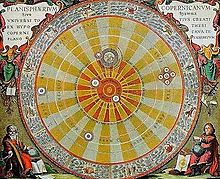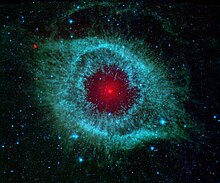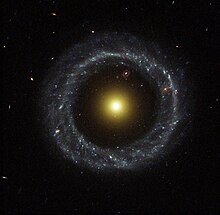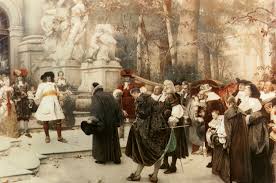
Revocation of the Edict of Nantes: The Edict of Fontainebleau (1685)
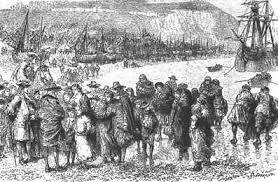
AFigure 1.–This engraving shows a group of Huguenots coming ashore at Dover in 1685. I’m not sure if it is based on a painting and when it was produced. An English reader tells us, “This is how my ancestors probably arrived in England. They came to Canterbury and were given refuge in the Black Prince’s Chantry which is in the crypt of the South Transept of Canterbury Cathedral. This part of the Cathedral is now known as the Huguenot Chapel and Services are still conducted there, every Sunday, In French!”
After years of persecution under Louis XIII and Louis XIV, Louis XIV finally took the ultimate step–revoking the Edict of Nantes (1685). As a result of these persecutions life for many Protestants became intolerable in France. It was not just the lack of religious freedoms, but many other matters. The state refused to recognize Protestant marriages leaving the children illegitimate. This affected property rights and inheritances. Large numbers of Huguenots fled France, leaving for Switzerland, the Netherlands, Germany, England, and the English colonies in America (especially New York, Massachusetts, and South Carolina). As a result, many Americans of French ancestry are Protestants. Except for the Huguenots few French people emigrated to America. France is one of the few European countries in which large numbers of did not emigrants to America. Interesting in that the French showed such an enthusiasm for America, No one knows precisely how many French Protestants emigrated. Louis attempted to discourage emigration and force them to convert. Estimates range from 0.4-1.0 million. About 1.0 million Protestants remained in France. Many settled in the isolated Cévennes Mountains becoming known as the Camisards. Louis XIV ordered them removed, resulting in the Camisard War (1702-05). It proved to be a disaster to France that would be paid in installments down to the 20th century. France by conservative estimates lost More than 0.4 million of her finest citizens with all their talents and abilities. It many ways it was comparable to the NAZI campaign against its Jewish citizens–only worse because the Huguenots were a much larger portion of the French population. Those that managed to emigrate would fight Louis in his attempt to take over the Netherlands and subsequently to return James II to the English throne. Their descendants would play a prominent role in the German armies that fought the French down to World War II.
The Edict of Nantes is one of the great acts of religious tolerance. It stemmed from the French Religious Wars which tore the country apart. The Religious Wars including the eight outbreaks of violence occurred during the reign of Henry III who succeeded Charles IX. The Huguenots led by Henry of Navarre defeated the Catholic forces at Coutras (1587). The Huguenots were aided by infighting among the Catholics. The Duc de Guise was assassinated by other Catholics (1588) as was Henry III himself (1589). With Henry’s death the House of Valois became extinct and of all people, the Protestant leader Henry of Navarre became king, the first monarch of the Bourbon line. To end the destructive civil wars, Henry converted to Catholicism (1593). He issued the Edict of Nantes granting almost complete religious freedom on the Protestants. With this freedom during the reign of Henry, the Protestants grew to be a major force in France. The Edict of Nantes was signed by Henry IV (1598). This ended the Wars of Religion. Under the terms of the Edict, the Huguenots were permitted to freely practice their faith in 20 specified French “free” cities. France was again became united and a decade of peace followed. Henry IV was murdered (in 1610)
Assassination of Henry IV (1610)
King Henry IV was murdered by a religious zealot (1610). The King was traveling from the Louvre to meet his great minister Sully. As a consequence of the Religious Wars, the King was usually well guarded in public, but after the passage of so many years without incident, the standards of precaution had fallen. Rather than using his heavy coach with class windows, the King who was increasingly dismissive of danger, chose a light phaeton which had open sides. It was much more maneuverable in the crowded streets of Paris. A hay wagon blocked the street. The King’s guard left his side to clear the way. François Ravaillac a failed monk and school teacher who had hallucinations had been stalking the King, seized on the opportunity. He jumped on the running board and slashed at the King with a knife. Henry was reading a letter and unprepared. His second blow severed the King’s aorta. Ravaillac was seized and horribly tortured to learn of any conspirators. Ravaillac insisted he acted alone and this appears to have been the case. Henry’s enlightened reign had given France more than a decade of peace in the religious wars. Had he lived longer it might have proved to be an enduring peace. With his death, it proved to be only a truce and the greatly improved power of the state in Catholic hands irrevocably changed the balance of power between the two religions.
Louis XIII and Louis XIV
Henry IV is commonly considered one of the great monarchs of France. One serious failure, however, was his failure to develop in his son an enlightened attitude toward religion. This failure was to doom the Huguenots whose cause Henry had so valiantly championed. Louis under the influence of his mother grew up to be devoutly Catholic and intolerant. Louis XIII after the murder of his father, Henry IV, rose to the throne. He sought to create an absolutist monarchy and organized groups like the Huguenots stood in his way. As a result, new persecutions were conducted and renewed fighting occurred. Huguenots that fell into Louis’ hands were sentenced to the galleys. The campaign to suppress the Huguenots was conducted under the guidance of Cardinal Richelieu. Louis XIII is another important French king. This was not the result of Louis himself, but rather his choice of Richelieu to oversee his reign. Richelieu He focused on the campaign against the Huguenots. He adroitly succeeded in breaking the political and military power of the Huguenots. After a protracted siege, the great Huguenot stronghold La Rochelle was finally taken (1628). He then attempted to conciliate the Protestants–to a degree. Louis XIV was even more committed to building an absolute monarchy. He is most famous for his statement, “I am the state.” To this end, Louis ordered a merciless persecution of the Huguenots, culminating in the revocation of the Edict of Nantes.
Louis XIV’ Beliefs
Louis XIV fervently believed that diversity of religion weakened his kingdom and authority. It is not altogether clear how important religion was to him. It is clear that the thought religious division weakened him politically. This was especially the case because he was planning a series of wars with neighboring Protestant countries. He thought that France needed one common religion. This was not a novel idea. Many European monarchs shared this idea and would continue to believe this into the next century. The difference between Louis and other monarchs is that Louis had achieved an absolute monarchy. Thus the Huguenots in France had no protection of law beyond the Edict of Nantes. The situation was quite different in many other countries, especially England. This is what Mary tried to do, but did not have Louis’ powers. Any fear of just such an action would cost Charles I his head (English Civil War) and James II his crown (Miraculous Revolution).
Revocation (1685)
Just as the Edict of Nantes is one of the great acts of religious toleration, it’s revocation by Louis XIV is one of the great acts of religious intolerance of history. After years of quiet persecution under Louis XIII and Louis XIV, Louis XIV finally took the ultimate step–revoking the Edict of Nantes (1685). The King’s mistress, Mme. de Maintenon is believed to have helped make up his mind to suppress the Huguenots. The revocation was issued as the Edict of Fontainebleau (October 1685). The revocation opened the way for the destruction of Protestant churches and schools. This was not the beginning of the persecution of the Huguenots, but it essentialy authorized that persecution. It made official royal policy that had been made possible after Huguenot military power was broken at La Rochelle (1628). Louis XIII and Louis XIV gradually chipped away a Protestantism in France. The Revocation did raise the level of action against the Huguenots. The King in the Edict ordered, ” The Edit of Nantes shall be abolished in its entirety. The Protestant temples shall be destroyed without exception. ….”
Text
Louis’ Edict of Fontainebleau revoking the Edict of Nantes is notable for the focus on the wealth and children of the Huguenots. The text read,
* The Edit of Nantes shall be abolished in its entirety.
* The Protestant temples shall be destroyed without exception.
* The Reformed clergy who do not immediately renounce, must leave the kingdom within two weeks under penalty of the galleys. Children over seven years of age may not be taken aboard, since they are of age in religious matters.
* All Reformed schools shall be dissolved, and all Reformed religious instruction prohibited.
* The followers of the “allegedly Reformed religion” (the religion which displeases the king) are prohibited from assembling for services or other meetings in any location whatsoever, or in a private residence, under penalty of seizure of their property and themselves.
* The children born to Reformed parents are to be baptized Catholic and sent to the Catholic churches (under penalty of 500 livres or more). The judges of the towns are explicitly instructed to supervise the enforcement of these decrees.
* The subjects, their wives and children, are prohibited from emigrating, or from removing their possessions and goods from the country under penalty of the galleys for the men and the seizure of body and possessions for the women. Those who already had left the country had four months to return without penalty, if they renounced.
Persecution
The destruction pf Protestant churches did not begin with the Revocation, but the pace quickened. Louis was determined to utterly destroy Protestantism in France and to annihilate those Huguenots who refused to convert. François Michel le Tellier, Marquis de Louvois, (1641-91) was Louis XIV’s Minister of State and War. He played a major role in building the French Army into the most powerful in Europe. And he used the Army to execute the King’s orders to destroy Protestantism and recalcitrant Huguenots. Louvois instituted the dreaded dragonnades. These were armed raids by the military to capture Huguenots and seize their property. They were accompanied by torture and pillage–the torture was both gratuitous and to make sure all the valuables were turned over. Protestant areas in the provinces which refused to convert were laid waste. Languedoc in particular were targeted. Louis within a few moths reduced the number if Protestants by about three-fourths. Faced with extinction, most converted. Those who publicly refused conversion faced execution or the galleys. The other option was emigration. Louis attempted to prevent this by confiscating the property of those who attempted to flee. Protestants were denied public office and often the ability to make decent livelihoods. Violence against individual Protestants varied. There were forced conversion in the countryside. Some individuals who spit out the host were burned at the stake in scenes reminiscent of the Inquisition. King Louis ordered the arrest of the most prominent Protestant nobles in Paris under lettres de cachet. They were incarcerated in the Bastille under harsh conditions, but not tortured. They were held their until they accepted conversion. Many died there rather than renounce their religion.
Conversion
About 1.0 million Protestants remained in France. It is difficult to assess how sincere the conversions were. Some Huguenots managed to discretely practice their religion. We know this because in the next century Protestants reappeared in France, but with much reduced numbers. Discreetly practicing Protestantism was difficult because of both the children and servants–some of the problems the Jewish Meranos faced in evading the Inquisition. French Protestants could avoid going to Church, but the children were not only a danger when young, but they were likely over time to be drawn into Catholic culture. Notice the emphasis placed on the children in thee text Louis’ revocation order.
Refugees
Life for Protestants as a result of Louis’ Revocation policies became intolerable in France. It was not just the lack of religious freedoms, but many other matters. The state refused to recognize Protestant marriages leaving the children illegitimate. This affected property rights and inheritances. Large numbers of Huguenots fled France. They became productive citizens in the countries which offered them refuge. They fled to Switzerland, the Netherlands, Germany, England, and the English colonies in America (especially New York, Massachusetts, and South Carolina). A s a result, many Americans of French ancestry are Protestants. Except for the Huguenots few French people emigrated to America. France is one of the few European countries in which large numbers of did not emigrants to America. Interesting in that the French showed such an enthusiasm for America, Many Huguenots also went to South Africa where they started the wine business. Most of them became Afrikaans-speaking Boers. No one knows precisely how many French Protestants emigrated. Louis attempted to discourage emigration and force them to convert. Estimates range from 0.4-1.0 million.
Camisard War (1702-05)
Some Huguenots seeking to avoid conversion settled in the isolated Cévennes Mountains becoming known as the Camisards. Louis XIV ordered them removed, resulting in the Camisard War (1702-05).
Impact
The Revocation of the Edict of Nantes proved to be a disaster to France that would be paid in installments down to the 20th century. France by conservative estimates lost More than 0.4 million of her finest citizens with all their talents, abilities, and technical skills. Among the Huguenot refugees were some of the luminaries of French finance, science, and industry. One such individual was Christtiaan Huygens. He was the inventor of the pendulum clock and first theorized that the stars were distant suns. Huygens fled back to his native Netherlands. Students of history will immediately appreciate that France’s fatal weakness in its coming wars with England was finance. And the loss of Huguenots in finance and industry was one factor in France’s weakness. France’s loss helped strengthen the economies of the newly Protestant countries on France’s borders. The industries they built or improved would help finance the resistance to Louis XIV and his descendants. Silk makers set up an English industry and mafe imprivements to the hitherto moribund weaving industry. England earlier imported luxurious fabrics and substantial cost. Glass makers did the same in Denmark. Perhaps the greatest impact was in the military realm. There were 600 military officers that deserted the King’s army and joined those of his enemies. Those that managed to emigrate would fight Louis in his attempt to take over the Netherlands and subsequently to return James II to the English throne. The tales of abuse, torture, and killing brought to these countries helped steel the resolve to resist both the French ad Catholoicism. Huguenots played a prominent role in William’s Protestant army at the Battle of the Boyne. The Prussian monarchy welcomed the Huguenots and they their descendants would play a major role in the subsequent Prussian/German wars with France down to World War II. We see French names among the Prussian/Germany military commnders. It was odd that during World War I and World War II some French generals had German names (Huntzinger, Koenig) while there were German commanders with names like de Maizière and Foucqué. In World War I Huguenot descendants included General von François and Admiral Souchon. In World War II we see Luftwaffe commander Adolf Galland. Another famous Luftwaffe ace of Huguenot descent was Hauptmann Hans-Joachim Marseille. He had 158 victories. but Was shot down in North Africa, age 22. (The extrodinarily high victory count of Luftwaffe fighter pilots during World war II were primarily achieved in the East.)
The Revocation of the Edict Nantes was one of the several notable acts of religious intolerance. Another occurred in France–the suppression of the Cathars (13th century). This led to the creation of the Holy Office of the Inquisition. The Spanish Inquisition is the best known, but the Inquisition offered in other countries as well. Another act was the Spanish expulsion of the Jews (1492) and subsequent expulsion of the Moors. The English in contrast persecuted the Catholics. The Japanese suppression of Christians is another example, The French Catholic campaign against the Huguenots is similar to the NAZI campaign against its Jewish citizens–only worse because the Huguenots were a much larger portion of the French population. In modern times, the Soviet atheism campaign is another example. The one recurrent thread through these different acts of religious intolerance besides the tragedy for the people targeted was how the country which expelled them was adversely affected. Perhaps the ultimate example here was the NAZI persecution of the Jews. The Jewish refugees played a major role building the atomic bomb. And had the NAZIs not surrendered (May 1945), could have been used on Germany rather than Japan.
HBC

Navigate the Boys’ Historical Clothing chronology pages
[Return to the Main Medieval chronology page]
[The 9th century] [The 10th century] [The 11th century] [The 12th century] [The 13th century] [The 14th century] [The 15th century]
[The 16th century] [The 17th century] [The 18th century] Navigate the Boys’ Historical Clothing Web Site:
[Return to the Main Edict of Nantes page]
[Return to the Main French Reformation page]
[Return to the Main country Reformation page]
[Return to the Main Christianity page]
[Return to the Main French history page]
[Introduction] [Activities] [Biographies] [Chronology] [Clothing styles] [Countries]
[Bibliographies] [Contributions] [FAQs] [Glossaries] [Images] [Links] [Registration] [Tools]
[Boys’ Clothing Home]
Created: 7:23 AM 5/6/2009
Spell checked: 9:38 PM 9/15/2010
Last updated: 4:55 AM 12/16/2011

